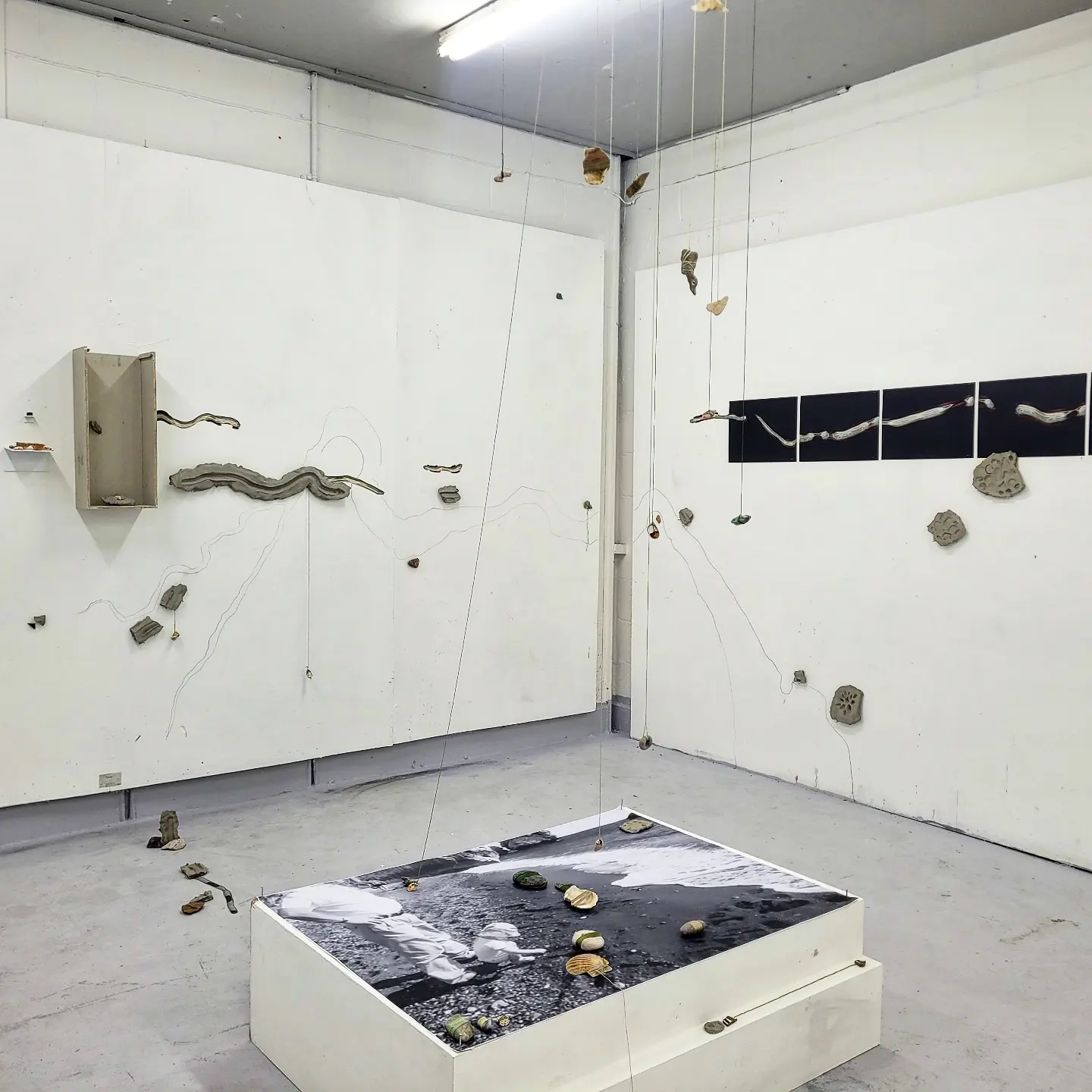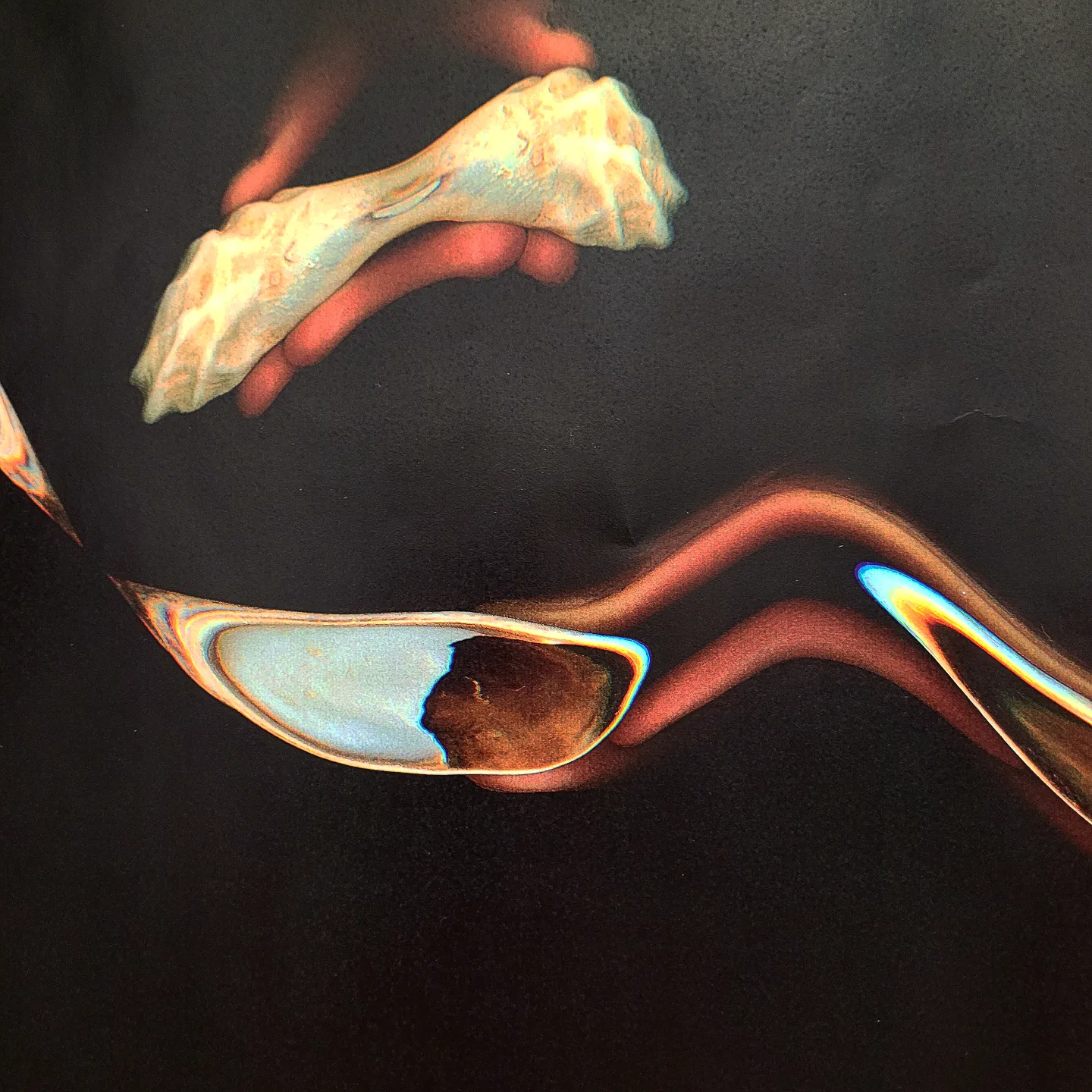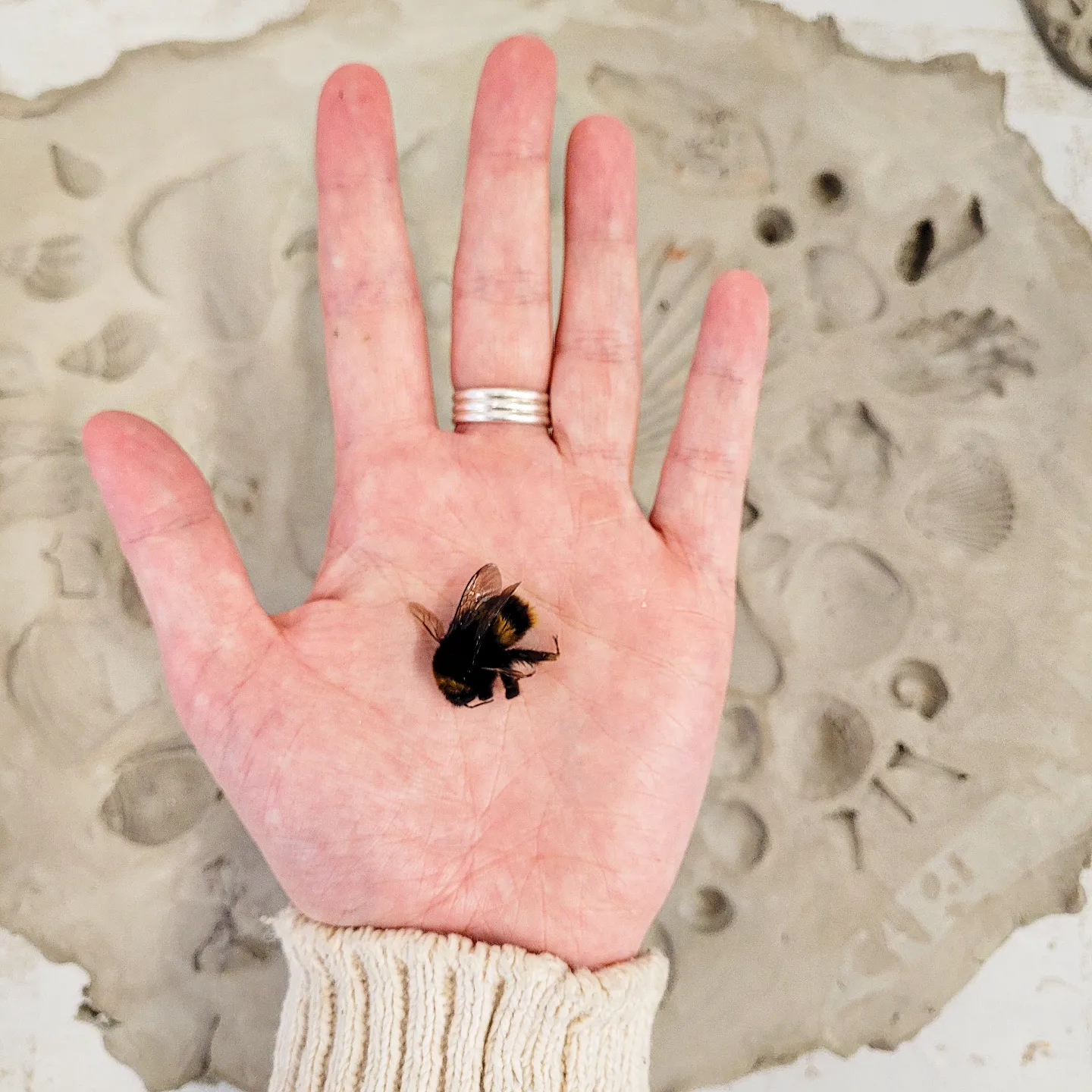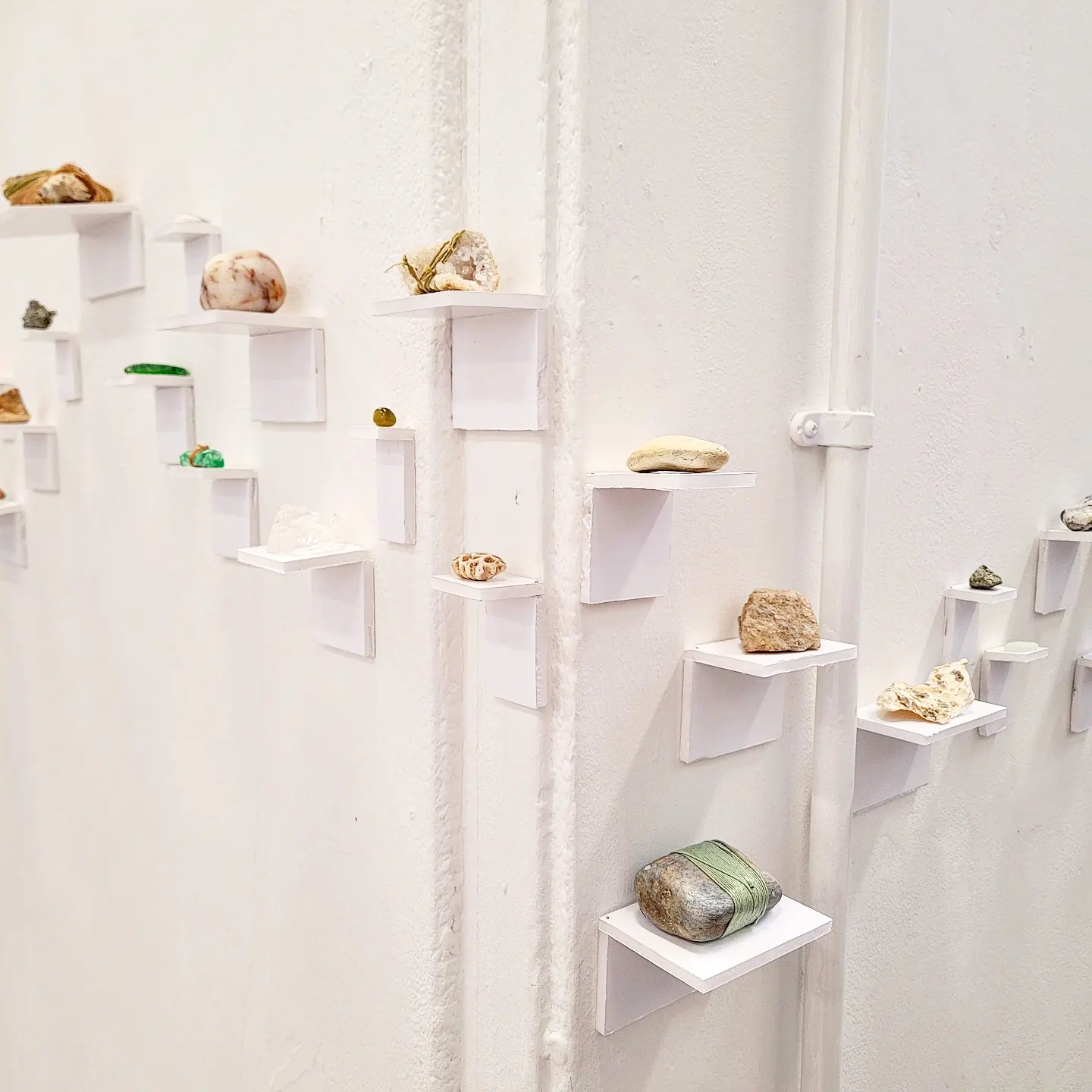
Multi-media artist.
Exploring the intersections of memory and geology that can be found within the phenomenon of ecological grief.
Final Project
‘We’re Going on a Lizard Hunt, We’re Not Scared’
My final project, ‘We’re Going on a Lizard Hunt, We’re Not Scared’, seeks to interact with the woven geological and personal timelines that I find to be entangled with my own experiences of ecological grief.
From as young as two I have collected ‘loose parts’ from nature, amassing a collection which now can be used to trace my own life ecologically, a collection which sits at the centre of the project.


‘We Can’t Go Over It’
As I come to terms with my anxieties surrounding climate change, the work becomes a way to settle into the nostalgia of the places I collected from as a child and the family members I connected to through this practice.
While time passes and the planet deteriorates, it becomes evident to me that these places and people will never be the same as they once were, and therefore, my work aims to imitate the fragility of memory and nature.
I seek materials and colours which evoke the lucid quality of Solastalgia whilst placing emphasis on the botanical language these collected, ‘temporal touchstones’ convey as a way to mark my presence within nature and natures presence within me.
‘We Can’t Go Under It’
The final project will focus on drawing, print work and photographic imagery, referencing specific memories from a childhood spent ‘digging for creatures’, a practice that has stayed with me as I have grown older.
Although the work itself finds its roots through personal recollections of my own geological timeline, I wish to emulate a sense of shared nostalgia and the childlike curiosity we hold for nature’s ‘loose parts’ in our youth, an ecological enchantment.

We must always bear in mind that a pebble is a transient thing. It is in the half-way stage of a long existence.
Clarence Ellis

‘We’ll Have to Go Through It’
Journey to the Show
As a multi-media artist, my work is not defined by a specific aesthetic or medium, rather driven by personal and ecological narratives. Throughout my journey to the degree show, I have found that a practice shaped by thoughtful process, the agential qualities of certain materials and the collection’s individual objects have been integral to informing an outcome which illustrates my thoughts on memory, geology and the parallels between grief and nostalgia.

My sculptural prints seek to interact with the material properties of clay, inviting the medium to ‘remember’, pressing the textures of the stones into its surface and in turn creating a ‘trace fossil’ of my ‘loose parts’. Through this practice a sense of more-than-human collaboration is achieved, imbuing each ‘trace fossil’ with a sense of temporality

The ‘drag prints’, distorted in their image, seek to illustrate memory as a journey, transforming the original object as I see it into its essence, as if the object itself has been erased and replaced with its remembered form. My intention is always to keep my hand evident within the image, tying my own timeline to that of the object’s.

The collaging of photographic imagery with drawing and text became relevant for its ability to piece together my own memories with those of a viewer, a collective remembering of a shared botanical childhood. Here in my sketchbook, a family phrase, ‘lizard hunting’, is tangled with the lines of, ‘We’re Going on a Bear Hunt’, a popular picture book from younger years.









‘The Last to Have Known Such Things’
The balance between archiving and curation has always been a core part of my practice and, in some ways, I had already begun a process of archiving at two years old without realising. This element of my practice had always been with me.
I am interested in the ways in which taxonomy can influence the narrative of the objects themselves, allowing me to explore the display of the collection in a number of different ways.
With each new curatorial and archival decision, emphasising a sense of fragility and childhood wonder has remained my intention and yet I have found the process itself a grounding and ruminative experience.

Through this work I am searching for comfort, focusing on working-with the actors of the Anthropocene to make sense of my own climate grief. However, it can be said that in my final year at Loughborough, my work has foremost become a means in which to say goodbye to my childhood, as well as way of giving gratitude to the family members that have been (and probably always will be!) with me ‘digging for creatures’.
The slowness of climate change is a fairy tale.
David Wallace-Wells
Visionary Thinkers
Visionary Creators
Visionary Makers